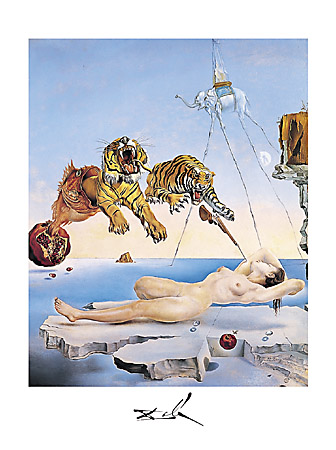|
The Tigress The eyes of the tiger are the brightest of any animal on earth.  THE TIGER AND ‘O’ by Meg Harris Williams Probably Wilfred Bion’s major contributions to psychoanalytic theory have been in the area of thinking about thinking. He describes the operation of a mysterious process which he terms ‘alpha-function’ upon primitive emotions, to create a foundation for ‘dream-thoughts’ eventually resulting in creative communication. At every stage this process is itself dependent upon the emotional linkages of love, hate and the desire for knowledge; and it co-exists with a parallel but antithetical, destructive process - sic) That night. Arf Arfer came in terror "like the King of Kings". The hunt had killed a tiger and the body had been brought to our camp. His mate came to claim him and for the next two nights the camp was circled by great fires and torches burning bright to keep her out With her great head and mouth directed to the ground so as to disguise her whereabouts she roared her requiem Even my fear was swallowed up in awe as almost from inside our tent there seemed to come a great cough and then the full-throated roar of the tigress’s mourning. (LWE, 17) The earthborn sound of the tigress’s roar, as if by magical acoustics, appears to come from ‘inside our tent’: the boy feel’s inside the tigress as much as he feels she is inside him. Being inside the tent, the source of the roar, has the significance of being inside the mouth, or the belly, the womb, of the tigress. The boy feels ‘swallowed up in awe’, which leads him to the fear of the tigress’s literally eating him: ‘She won’t eat us Daddy? You are sure she won’t?’ Already there is a suggestion of birth and death being the ‘reversed perspective’ of the same process, rather as, in the Memoir, Bion described them as the ‘same instinct’ m ‘different directions’ . And that process is, in a way, a first primitive knowledge of reality, of a Godhead which goes beyond the simple authoritarian and omnipotent qualities of our picture of Wilfred’s father. Despite his shooting prowess and the simple notion of masculinity associated with it, the spirit of the tiger - through his feminine counterpart the tigress - succeeds in penetrating the well organized ‘camp’. Through his encounter with two tigers, male and female, dead and alive, yet both felt as aspects of one being, Wilfred gains a hint of another kind of masculine-feminine conjunction, and through this another kind of Knowledge, which neither his actual father nor mother can offer him (nor any other adult figure in his life. For mother, as well as father, seems to evade the issue or to not understand the nature of Wilfred’s curiosity about the tiger pair and their whereabouts "Where is she now?" "Oh I don’t know child - far, far away I expect. " It is clear that he is preoccupied with more than physical whereabouts, since the context goes on to Heaven and Jesus and implications of the tiger’s soul: "What is he doing now?" "Who?" "Jesus - I mean the tiger." Wilfred never actually saw either of the tigers, but their internal reality for him was perhaps all the greater for that; the idea of the tiger becomes associated with a reality both infinitely distant from him and within him: in other words, with ‘0’, the mysterious noumenal point of knowledge. ‘There are many formulations of dread, unformulated and ineffable - what I denote 0’ ; the arrival of Arf Arfer ‘like the King of Kings’ is such a formulation, of the type that the ‘civilized world’ seeks by sophisticated means to avoid: warding off ‘awareness of something which is dread or terror and behind that the object that is nameless’. Yet the nameless object, the monstrous tiger or its transmigrating soul, its ‘mate’, penetrates Wilfred’s mind despite the civilized world’s efforts to build a wall of camp fires to protect his and their consciousness. In view of the symbolic meaning that the previous elements can have for the Lopa, the confrontation between the tiger and the man that constitutes most of the myth, can refer so much to confrontations with the called "peoples of the tiger" in remote times; as to a war of sexes among the feminine elements represented by the tiger, and the masculine ones, for the man. 9th-On second thought, The Tigress resonates at a pure level,. Add This Entry To Your CureZone Favorites! Print this pageEmail this page |
CureZone Newsletter is distributed in partnership with https://www.netatlantic.com
Contact Us - Advertise - Stats
Copyright 1999 - 2024 www.curezone.org
0.047 sec, (2)